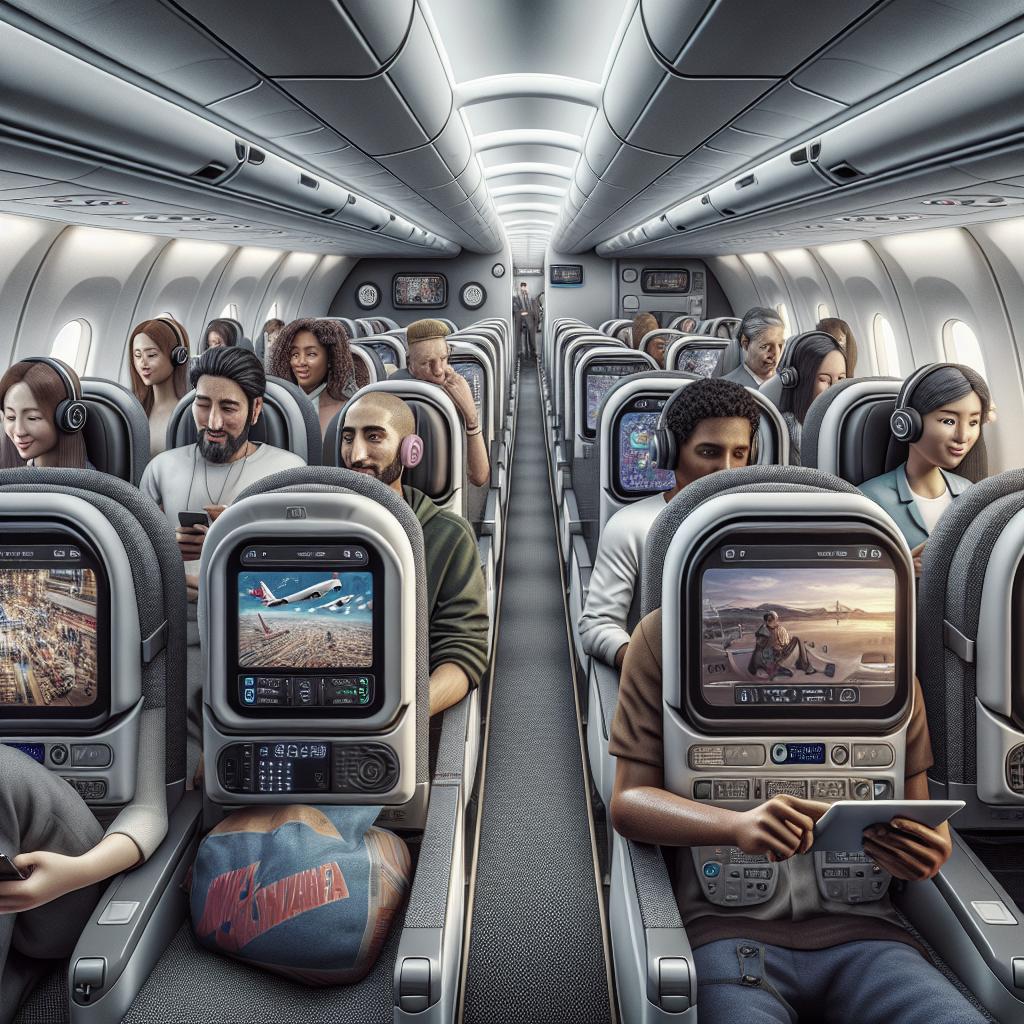How Does In-Flight Entertainment Work?
Flying high above the clouds, passengers today have the luxury of a wide array of entertainment options at their fingertips. In-flight entertainment systems have come a long way, evolving from simple overhead screens to a full media hub right in your seat back. This blog post dives into the world of airborne amusement, exploring current trends, the fusion of old and new technologies, and the requirements of modern-day travelers. Learn how lighter and brighter screens are transforming the passenger experience and discover how airlines are adapting to meet diverse needs.
Trending Now
In-flight entertainment (IFE) systems are constantly evolving to match passengers’ growing expectations and technological advancements. Gone are the days of single central screens; today, each passenger often enjoys their personal display, offering a selection as varied as a streaming service at home. Airlines are integrating more complex systems, offering thousands of hours of movies, TV shows, music, and games.
One current trend is the shift towards wireless IFE systems, which allow passengers to stream content directly to their devices. This booming approach not only reduces aircraft weight but also minimizes maintenance costs, a win-win for both airlines and travelers. Additionally, it circumvents issues with outdated hardware by putting the onus of equipment updates on the user rather than the carrier.
Great Expectations
Today’s passengers expect immersive, seamless entertainment experiences akin to what they receive through their subscription services on the ground. High-resolution displays, noise-canceling headphones, and a diverse content library aren’t just luxuries; they’re expected staples. Airlines are hard-pressed to keep up with these expectations, ensuring the technology onboard is intuitive and dynamic.
Satisfaction hinges not just on the quantity of available content but also on its quality. Offering localized content, updated releases, and even live television transforms the in-flight experience. Moreover, the integration of gaming, interactive maps, and even digital publications is increasingly common, appealing to a vast array of interests and age groups.
Screen Synergy
The synergy between in-flight entertainment systems and personal devices is becoming increasingly vital. With Bring Your Own Device (BYOD) strategies, airlines let passengers leverage their smartphones and tablets to control the seatback screens or access entertainment directly. This strategy not only delights passengers who prefer their personalized interface but also lightens the load on airlines to maintain complex hardware systems.
Such synergy extends to connectivity, as inflight Wi-Fi becomes more ubiquitous, bridging the gap between offline entertainment and online interaction. Passengers can begin a movie in the airport lounge and continue watching in their seats or even engage in social media and work tasks. This interactivity ceaselessly changes the terrain of onboard entertainment.
Lighter and Brighter
Improvements in screen technology have made in-flight displays not just better, but also lighter and more energy-efficient. Advancements in LED and OLED displays offer brighter colors and better contrast, making viewing a delightful experience even under varying cabin lighting conditions. These enhancements contribute significantly to reducing eye strain during long flights.
Reducing weight without compromising on quality remains a key objective for airlines, as less weight translates to lower fuel consumption and costs. Consequently, airlines are opting for compact, power-efficient display units that still offer high resolution and a wide viewing angle. This shift supports airlines’ sustainability goals and enhances the passenger experience.
Needs Must
Meeting the entertainment needs of a diverse passenger demographic is a daunting challenge for airlines. While some passengers prioritize a curated selection of the latest blockbusters, others may seek calming, sleep-inducing content or engaging learning experiences. Catering to these varied requirements demands a flexible and adaptive approach.
Customization is key, with personalized content recommendations based on previous interactions becoming increasingly common. Moreover, accessibility features such as subtitles, language options, and audio descriptions ensure inclusivity, allowing all passengers to enjoy the in-flight content fully. By addressing these needs, airlines craft a richer and more engaging flight experience.
Final Thoughts
The realm of in-flight entertainment is on a trajectory of continual adaptation and innovation. Airlines are tasked with blending cutting-edge technology and varying content appeals while remaining mindful of operational and cost efficiencies. As flying environments become more connected and digital-forward, passengers can expect a travel experience that mirrors the comforts and conveniences of their grounded lives.
| Section | Description |
|---|---|
| Trending Now | Explores the shift towards wireless IFE systems and personal display units catering to modern streaming habits. |
| Great Expectations | Discusses passenger desires for high-res displays and diverse content akin to home entertainment experiences. |
| Screen Synergy | Focuses on the interaction between in-flight systems and passenger devices, enhancing connectivity and entertainment. |
| Lighter and Brighter | Describes advancements in display tech leading to energy-efficient, vibrant screens enhancing passenger experiences. |
| Needs Must | Highlights personalized content, accessibility, and inclusivity as essential elements in meeting diverse passenger needs. |


